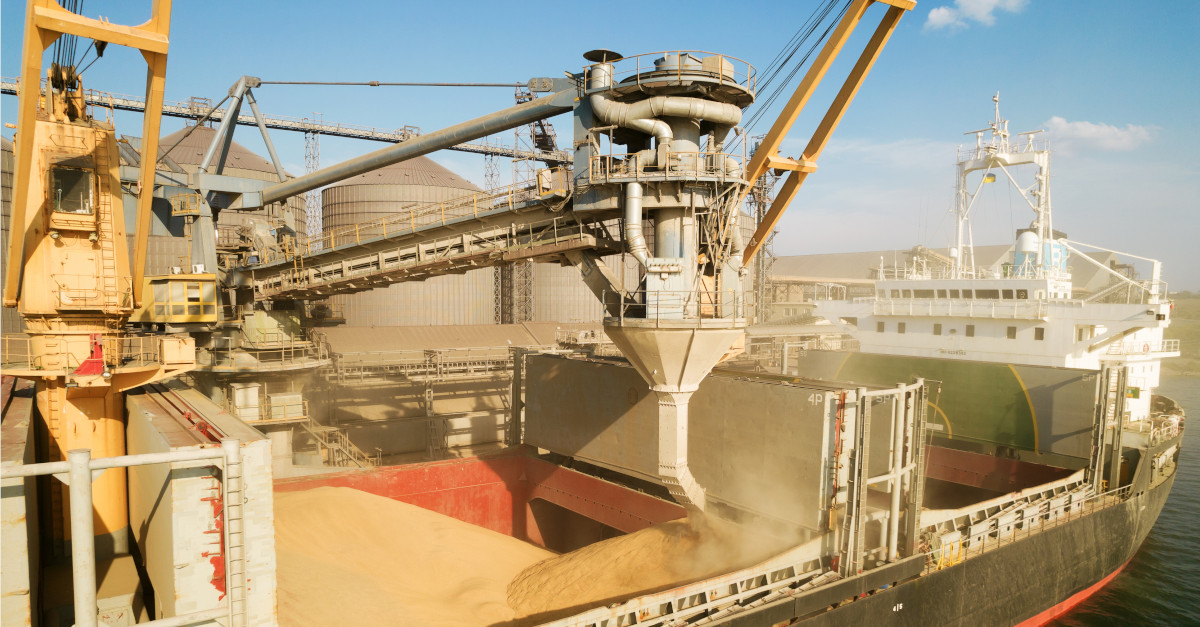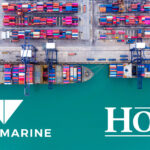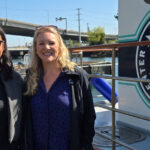During the 36 years he’s dedicated to his career at Transmarine, our Vice President of Dry Bulk Marketing, Mark Hanson, has established a “bulk” of solid relationships and expertise for our company and our clients.
We recently asked Hanson to share more about the ins and outs of one of his specialties — bulk grain shipping — and how Transmarine is best poised to serve these specific port call operations.
How Much Grain Does a “Bulk Shipment” Entail?
When you hear the word “bulk,” you may think of pallets of cereal boxes at the grocery store, or 24-roll mega-packs of paper towels. But for us at Transmarine, bulk grain shipping involves entire marine carrier vessels filled with a minimum of 20,000 tons of grain. “More frequently, it’s even bigger shipments,” Hanson expounds. “Anywhere up to 65 – 70,000 tons is the usual.” Crewing a ship of that size requires a crew of 18 – 22 people to get it there and back, and can take two to three weeks, depending on where it’s going.
Where Does The Grain Come from, Where is it Going, and Why?
“Most of the grain we ship,” says Hanson, “is coming from the Pacific Northwest/upper Mid West. Grain from states including Oregon, Washington, Montana, North Dakota, South Dakota, and Minnesota comes by rail or barge to one of the eight local grain elevators in our area. From the grain elevator, it’s loaded onto the ship.”
Once aboard the ship, “The bulk of the grain we’re exporting is going all over Asia, since we’re on the West Coast,” Hanson explains. “Japan, China, Korea, Taiwan, the Philippines, Thailand, Indonesia are primary destinations. Places like Vietnam and Malaysia are also starting to become bigger buyers.”
Transmarine’s role in these long-distance shipments is to facilitate between the trader who owns the grain, the ship operator (charter) transporting it, the terminal loading the cargo, and all inspectors involved in entering/clearing the ship. “Once the ship heads our way to get the grain, that’s when we’re doing most of the coordination with the grain elevator, the inspectors, customs officers, and cleaning crews or anyone else who may be needed when it comes to loading the shipment,” Hanson says.
Upon arrival at its destination, grain is used for a variety of purposes. Food-grade wheat is used to make pasta, cake, bread, cereal, and other food products. “We also ship soybeans to China to be made into soybean oil,” says Hanson. The byproduct of that process is soybean meal, which is used for animal feed. Corn is also frequently shipped overseas for feeding animals like pigs, chickens, and cows.
What Are Some of the Obstacles When Shipping Grain in These Quantities?
Moisture
“When you’re shipping grain, it needs to be kept fairly dry, as wetness can damage the grain during transit,” Hanson underscores. Several of our ports operate within the Pacific Northwest, which is known for significant amounts of rain from October to June on a typical year. As a result, it is common practice to load grain ships during light rain or drizzle conditions, since this small amount of moisture will not cause damage to the cargo. “If we took the position not to load in any rain,” Hanson continues with humor, “it could take several days or more to complete loading a ship, due to the amount of rain we receive in our area.”
In whatever weather conditions, once the vessel is loaded, the ship’s hatches must then be tightly sealed to prevent any sea water from entering the hold during the transit.
Cleanliness
Each ship that arrives at port is carefully inspected for cleanliness — sometimes by more than one inspector. If there is rust, paint scale, or residue inside the hold from a previous shipment, it cannot pass inspection. In these cases, owners can task their own crew with getting it properly cleaned, though that may take as long as a week or more. “Many owners work with us to hire outside contractors to take care of cleaning,” Hanson says, “usually accomplishing everything within only a couple of days.”
Pest control is another aspect of cleanliness, but practices vary in that regard depending on where a shipment is headed. “Every bulk grain shipment to China is automatically fumigated en route,” says Hanson, “but other locations may have different requirements. Some destinations do not generally fumigate, whereas other destinations do. The grain buyers determine whether they want their cargo fumigated or not.”
Stability
Ensuring ship stability with The National Cargo Bureau is one of the most important steps when it comes to bulk grain shipping.
“In order to meet these stability limits,” Hanson explains, “the ship cannot have too many slack holds. Our team coordinates with the master to formulate a stowage plan that will fill as many holds as possible, while also taking into account the contracted amounts, as well as the limitations of the ship’s capacity and load line limits. Typically, on a five or seven hold ship, generally we can have two hold slack, but the others need to be full to pass stability.”
Shipping with Success
Thanks to Transmarine’s routine measures and protocols, most bulk grain shipments move smoothly. “Our job is to make everyone’s life easier and make everyone happy,” Hanson says. “When there is a problem, how you deal with it is so important. Time is money in the shipping business. Hundreds of thousands of dollars can happen in the case of a mistake, so how we handle something really matters.”
But in spite of regulations and checklists, these mistakes can happen. “Not too long ago we had a ship nearly loaded — six out of seven holds were complete,” shares Hanson, “when the ship accidentally turned a valve and dumped ballast water all over the grain in the final hold to be loaded. The entire amount of grain loaded into that one hold was contaminated.”
The Transmarine team worked swiftly to remove the ship from dock, shift to a layberth, bring in the cranes and equipment needed to discharge what had been loaded, clean out the holds, reinspect the hold to ensure it was clean enough to load in new grain, and then get it back to the grain dock.
“You don’t plan on stuff like that,” Hanson says. “These are the out of the ordinary things you have to be ready to handle at 2:00 AM. But we have to make it smooth for everyone: the ship operator, the owner, the terminal loading it. It all comes down to relationships when making a business work.”
If you’re interested in learning more about Transmarine’s unique service model which places experience and expertise aboard your vessel, or how our trained veterans and highly experienced operations managers can assist with your wet, dry, or breakbulk port call operations, please reach out to our team directly.








